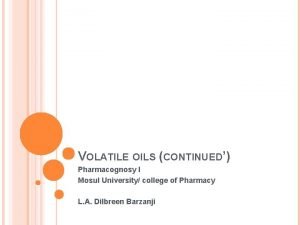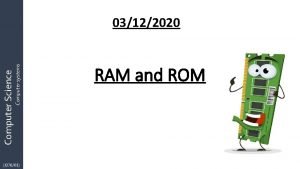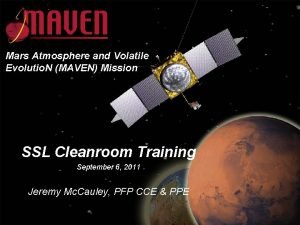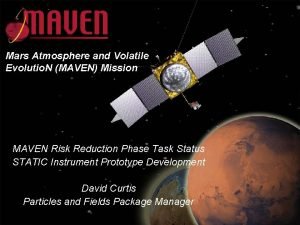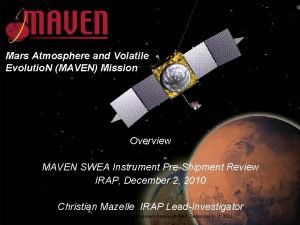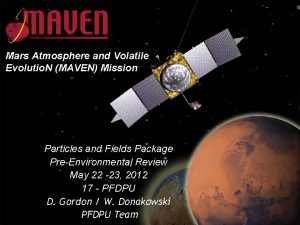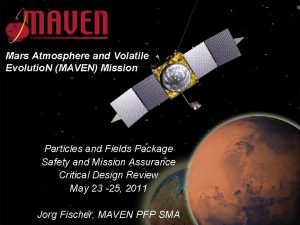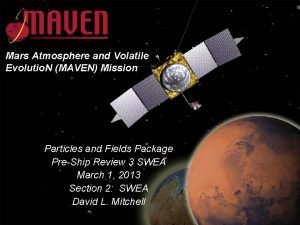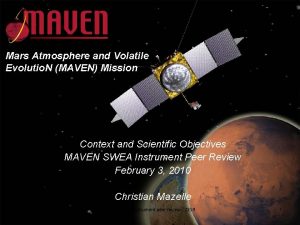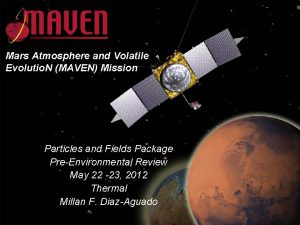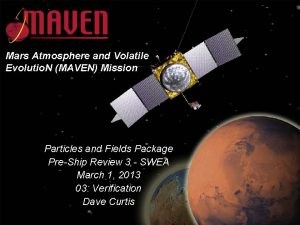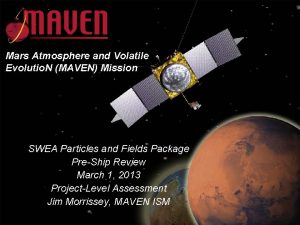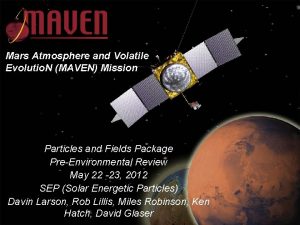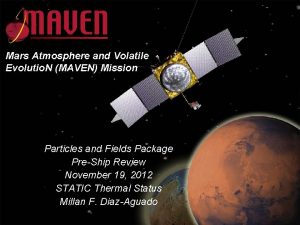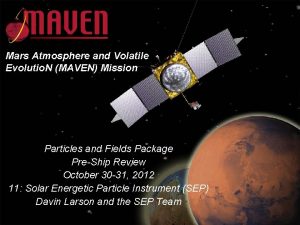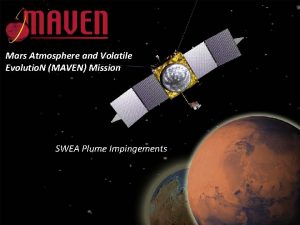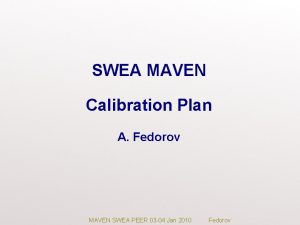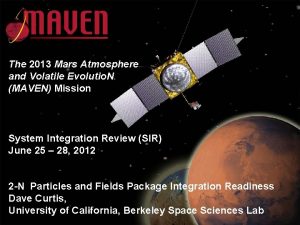MAVEN Mission to Mars Mars Atmosphere and Volatile



























- Slides: 27

MAVEN: Mission to Mars (Mars Atmosphere and Volatile Evolutio. N) Presented by Dr. Harold A. Geller 1

Launched: 18 November 2013 Mars Orbit Insertion: 22 September 2014 2

Sa fu me w as lly lo eig siz a fu ade ht ~6 ed S ll- d 00 U 0 l V bs The MAVEN Spacecraft Sa bu me l len s – w engt gt ing h a h o ti s f 3 p-t a s 7 f o-w cho t. ing ol tip

The MAVEN Spacecraft • • • 3 -axis attitude control (wheel based) Mono-propellant propulsion system Single-fault tolerant during all critical events Launch (Wet) Mass: 2550 kg max Spacecraft Dry Mass: 903 kg max Power: 1135 W at Mars Aphelion SWEA LPW (2) Electra (behind) SWIA SEP MAG (2) “Gull-Wing” Solar Arrays Fixed HGA SEP Articulated Payload Platform (IUVS/STATIC/NGIMS) 4

The MAVEN Spacecraft Ion-Related Properties and Processes. LPW (2) Sun, Solar Wind, Solar Storms SWE A EUV SEP STATIC MAG SWEA LPW SWIA Neutrals and Ions Plus Evolution SEP “Gull-Wing” Solar Arrays Fixed HGA MAG (2) IUVS Electra (behind) SEP NGIMS Articulated Payload Platform (IUVS/STATIC/NGIMS) 5

Two Major Mysteries to Address Primordial Mars Concept 1. Where did the water go? 6

2. Where Did the Atmosphere Go? Up Down 7

MAVEN Seeks Answers • How much atmosphere is escaping today? • What processes strip atmospheric particles? • How much atmosphere has escaped over history? • How important have the ‘ups’ been? • What can Mars teach us about other planets? 8

The Solar Wind Removes Atmosphere Mars lacks a global magnetic field like the Earth Mars Cartoon Mars Computer Simulation 9

Upper Atmosphere and Interplanetary Space A Coupled System 10

Total Loss Through Time History of Solar Activity Solar wind pickup Ion outflow Sputtering Photochemical and Jeans escape Ion bulk escape Physical & Empirical Models NGIMS IUVS Isotope Ratios 11

This image shows the size of MAVEN's initial orbit when it first arrived at Mars, and then its current orbit after carrying out four maneuvers. The current orbit is very close to MAVEN's final science mapping orbit. Credit: University of Colorado/NASA 12

Artist’s rendition of the MAVEN spacecraft in orbit around Mars, with all of the booms deployed and instruments turned on. For scale, the spacecraft is 37 feet in length from tip to tip of the solar panels and extensions. Credit: University of Colorado/NASA 13

Atomic hydrogen scattering ultraviolet sunlight in the upper atmosphere of Mars, imaged by MAVEN’s Imaging Ultraviolet Spectrograph. Hydrogen is produced by the breakdown of water, which was once abundant on Mars' surface. Hydrogen is light and weakly bound by gravity, so it extends far from the planet (indicated with a red circle) and can readily escape. Credit: University of Colorado; NASA 14

Atomic carbon scattering ultraviolet sunlight in the upper atmosphere of Mars, imaged by MAVEN’s Imaging Ultraviolet Spectrograph. Carbon is produced by the breakdown of carbon dioxide, a potent greenhouse gas thought to be abundant in Mars’ past. Mars is indicated with a red circle; sunlight is illuminating the planet from the right. Credit: University of Colorado; NASA 15

Atomic oxygen scattering ultraviolet sunlight in the upper atmosphere of Mars, imaged by MAVEN’s Imaging Ultraviolet Spectrograph. Atomic oxygen is produced by the breakdown of carbon dioxide and water. Most oxygen is trapped near the planet, (indicated with a red circle) but some extends high above the planet and shows that Mars is losing the gas to space. Credit: University of Colorado; NASA 16

Three views of an escaping atmosphere, obtained by MAVEN’s Imaging Ultraviolet Spectrograph. By observing all of the products of water and carbon dioxide breakdown, MAVEN's remote sensing team can characterize the processes that drive atmospheric loss on Mars. These processes may have transformed the planet from an early Earthlike climate to the cold and dry climate of today. Credit: University of Colorado; NASA 17

The geographical distribution of ozone in the southern hemisphere of Mars, imaged by MAVEN’s Imaging Ultraviolet Spectrograph. On Mars, ozone is primarily destroyed by the combined action of water vapor and sunlight. The cold, dark conditions near the pole allow ozone to accumulate there. Credit: University of Colorado; NASA; LATMOS/CNES 18

This image shows the sequence of events leading up to the first SEP event observed my MAVEN at Mars. The top panel shows the distance between MAVEN and Mars as a function of time. The bottom Panel show Energetic Ion Flux as a function of particle energy (vertical axis) and time (horizontal axis). Credit: Davin Larson 19

Coronagraph image taken by SOHO spacecraft from near Earth. From this view angle the CME is heading to the left towards Mars. Credit: ESA/NASA SOHO 20

Coronagraph image taken by STEREO spacecraft with is currently situated on the far side of the Sun. From this view angle the CME is heading to the right towards Mars. Credit: NASA STEREO Mission 21

This video shows the evolution of the Sept. 26, 2014, coronal mass ejection shock front as it propagates toward Mars as generated by the WSA-Cone-ENLIL model simulations performed at the NASA Community Coordinated Modeling Center. The color map represents the density of the solar wind plasma in the inner heliosphere from near the sun out to twice the distance of Earth's orbit. Credit: NASA's Goddard Space Flight Center 22

Next Step: Comet Encounter 23

24

Comet C/2013 A 1 Siding Spring (image by Hubble Space Telescope) 25

26

Education & Outreach Resources • MAVEN Educator Ambassador (MEA) project lessons and interactives http: //lasp. colorado. edu/home/maven/education-outreach/for-educators/mea/ • Red Planet: Read, Write, Explore! lessons http: //lasp. colorado. edu/home/maven/education-outreach/for-educators/red-planet • Invisible Mars: Science on a Sphere script & playlist http: //lasp. colorado. edu/home/maven/education-outreach/afterschoolsummerprograms/invisible-mars • You can also share our MAVEN 2 Mars Twitter, Facebook, and You. Tube links, if your audience would like to stay up-to-date on mission news: • https: //twitter. com/MAVEN 2 Mars • https: //www. facebook. com/MAVEN 2 Mars • https: //www. youtube. com/user/MAVEN 2 Mars http: //www. nasa. gov/maven http: //lasp. colorado. edu/home/maven 27
 Mars atmosphere
Mars atmosphere Maven is a project management and comprehension tool
Maven is a project management and comprehension tool Ares mission to mars
Ares mission to mars Mars express mission
Mars express mission Mars design reference mission
Mars design reference mission Mark alpert maven
Mark alpert maven Vogella junit
Vogella junit Maven vista technologies pvt ltd
Maven vista technologies pvt ltd Maven pfp
Maven pfp Stubguard
Stubguard Phython
Phython Mybatis resultmap hashmap
Mybatis resultmap hashmap Maven nar
Maven nar Maven nar plugin
Maven nar plugin Thymeleaf for문
Thymeleaf for문 Ivy plugin
Ivy plugin![[tilstoppet tårekanal hos voksne] [tilstoppet tårekanal hos voksne]](data:image/svg+xml,%3Csvg%20xmlns=%22http://www.w3.org/2000/svg%22%20viewBox=%220%200%20200%20200%22%3E%3C/svg%3E) [tilstoppet tårekanal hos voksne]
[tilstoppet tårekanal hos voksne] Maven nar plugin
Maven nar plugin Oligeneous
Oligeneous Volatile oils pharmacognosy
Volatile oils pharmacognosy Distilation
Distilation Raoult's law for non volatile solute
Raoult's law for non volatile solute Volatile oils - pharmacognosy
Volatile oils - pharmacognosy Percent by mass of volatile water in hydrated salt
Percent by mass of volatile water in hydrated salt Secondary storage provides temporary or volatile storage
Secondary storage provides temporary or volatile storage Is rom volatile or nonvolatile
Is rom volatile or nonvolatile Chloroform spirit preparation
Chloroform spirit preparation Motivation is volatile
Motivation is volatile
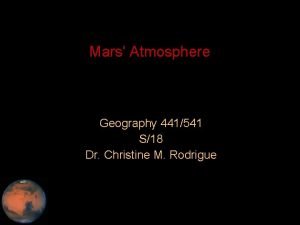


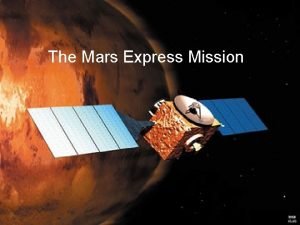
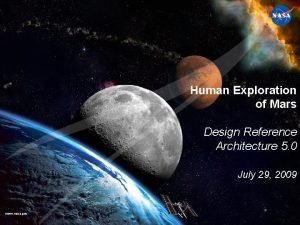




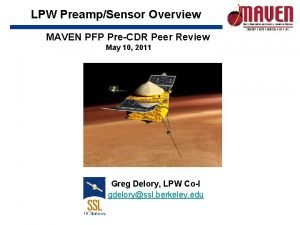
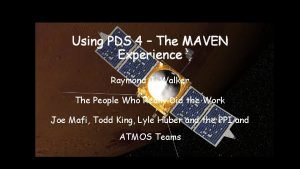




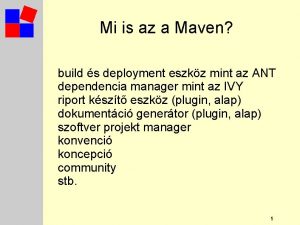
![[tilstoppet tårekanal hos voksne] [tilstoppet tårekanal hos voksne]](https://slidetodoc.com/wp-content/uploads/2020/10/989822_02cde8f579eda52bc91cc45f50c1e905-300x188.jpg)


